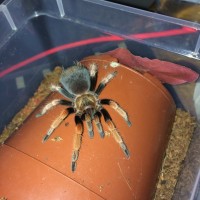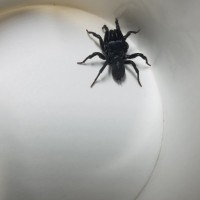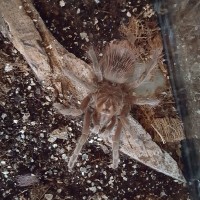This T was bought/rescued from a local pet store with only the label "Pink Toe". Im sure it is an Avic, but unsure of the species as it doesnt really resemble any of the avic (or used to be avic) species I have currently. I have had one person suggest it was an Avic sp Blue. Any help welcome.
Media information
- Category
- Tarantula Identification
- Added by
- TarantulaCollective
- Date added
- View count
- 2,575
- Comment count
- 29
- Rating
- 0.00 star(s) 0 ratings
Image metadata
- Filename
- 18951028_1572564389421534_2987770452308939628_n.jpg
- File size
- 99.1 KB
- Dimensions
- 714px x 960px







